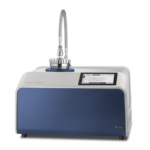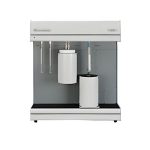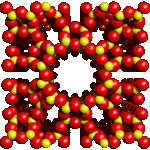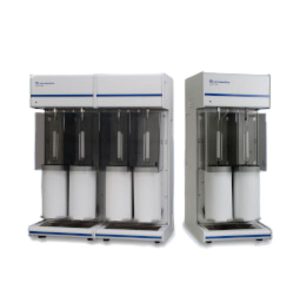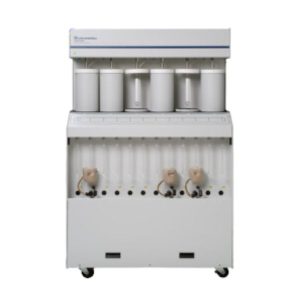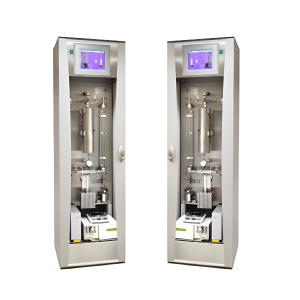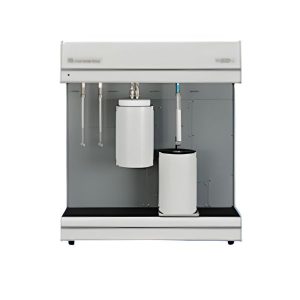General
High Resolution, High-throughput Physisorption and Chemisorption Instrument
The 3Flex has become a crucial tool for providing high resolution adsorption, desorption, isotherms to advance and validate fundamental understanding into development of methodologies and process improvements.
Extend your range of study
Go beyond micropore and extend your range of resolution to the ultra-microporous level. The advanced engineered design of the 3Flex permits you to acquire accurate results with a resolution to 10-5 mmHg
Scientific Parameters
Micromeritics 3Flex Surface Characterization Analyzer is a fully automated three-station instrument capable of high-performance physisorption and chemisorption analyses with superior accuracy, resolution, and data reduction.
Extend and increase your knowledge
3Flex permits you to optimize your experimental parameters to gain greater understanding of your material. This is the only available 3-port surface characterization system with the ability to analyze a sample with 3 separate probe gases simultaneously, one on each analysis port, within a single run
Optimize your process
With 3Flex you gain valuable data to validate your theories and rationalize the design and synthesis of MOFs, zeolites, activated carbons and other products. Utilize the high throughput results of the 3-port mesopore and micropore design of the 3Flex to gain rapid understanding of restrictions or boundaries that may influence or impede your process optimization.
Models
3Flex Physisorption
The 3Flex is a high-performance instrument for mesopore and micropore analyses and delivers superior accuracy, resolution and data reduction. All analysis ports can be configured for micropore and are also available with krypton analysis for low surface area materials. A vapor sorption capability is also available. A single 3Flex with its minimal footprint and three configurable analysis stations eliminates costly investment in multiple instruments and additional bench space.
- Can be configured with 1-Port for Mesopore and Micropore (physisorption) analysis and 2-Ports Mesopore (physisorption) analysis.
- Can be configured with 3-Ports for Mesopore and Micropore (physisorption) analysis.
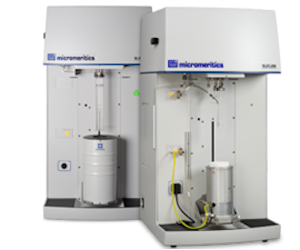
3Flex Static Chemisorption
Using the chemisorption option, researchers can obtain valuable information about the physical or chemical properties of catalysts, catalyst supports and a variety of other materials. This model can easily switch from chemisorption to physisorption in less than 3 minutes to provide advanced analyses on the active surface area of the sample material.
Can be configured with 1-Port for Mesopore and Micropore (physisorption) analysis and 2-Ports Mesopore (physisorption) analysis
- 1 of the 3 Ports will be used for Chemisorption studies and the other 2 ports are not in use during Chemisorption analysis
Can be configured with 3-Ports for Mesopore and Micropore (physisorption) analysis.
- 1 of the 3 Ports will be used for Chemisorption studies and the other 2 ports are not in use during Chemisorption analysis
3Flex Dynamic Chemisorption
The 3Flex TCD is our newest addition to the expanding capabilities of the 3Flex instrument family. Dynamic chemisorption analyses are available to the user with the addition of an integral thermal conductivity detector. This new feature allows the user to perform temperature programmed reduction (TPR), oxidation (TPO), desorption (TPD), and reduction reactions (TPRx). The 3Flex TCD also has an option for pulse chemisorption analyses which can be performed with manual injections or automatically with the optional injection loop.
Level 1 – Includes injection port, cold trap, and new analysis protocols in MicroActive to support dynamic chemisorption analyses.
Level 2 – Pulse chemisorption adds increased precision, repeatability, and reproducibility by the addition of an injector loop valve with two loop options in addition to four gas inlets, a restrictor for flow control and an industry exclusive; local temp
Level 1 and level 2 also has the option to be configured with:
Configuration Option 1
- 1-Port for Mesopore and Micropore (physisorption) analysis and 2-Ports Mesopore (physisorption) analysis.
- 1 of the 3 Ports will be used for Chemisorption studies and the other 2 ports are not in use during Chemisorption analysis
Configuration Option 2
- 3-Ports for Mesopore and Micropore (physisorption) analysis.
- 1 of the 3 Ports will be used for Chemisorption studies and the other 2 ports are not in use during Chemisorption analysis
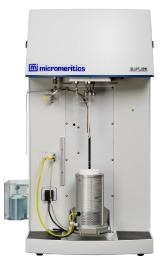
Sample Preparation Systems
Micromeritics’ sample preparation devices prepare batches of samples for surface area and pore volume analysis. They combine flowing gas and/or vacuum with heat to remove atmospheric contaminants, such as water vapor and adsorbed gas, from the surface and pores of the sample. The quality of the data produced by surface area and pore volume analyses depends greatly on the cleanliness of the sample surface. All Micromeritics’ sample preparation devices accept helium, nitrogen, argon, and other non-corrosive gases.
The VacPrep™ 061
The VacPrep™ 061 offers two methods for removing contaminants. In addition to flowing gas, it provides vacuum to prepare samples by heating and evacuation. This combination allows you to choose the preparation method that is best suited to your material or application. The VacPrep features six degassing stations, and a choice of vacuum or gas flow preparation on each of the six stations. Needle valves are also provided allowing you to introduce the flowing gas or vacuum slowly to prevent fluidization of samples.
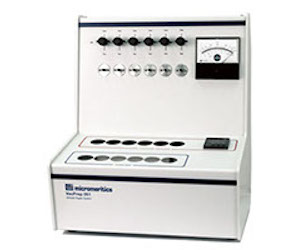
The FlowPrep™ 060
The FlowPrep™ 060 applies both heat and a stream of inert gas to the sample. The heat causes contaminants to desorb from the surface and the stream of inert gas sweeps them out of the sample tube. It lets you choose the temperature, gas, and flow rate best suited for your sample material and application. Needle valves allow you to introduce the flowing gas slowly to prevent fluidization of samples.
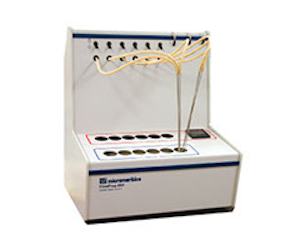
Smart VacPrep™ 067
The Smart VacPrep™ is an advanced six-port system that utilizes vacuum to prepare samples by heating and evacuation. Each of the ports may be operated independently. Samples may be added or removed from degas ports without disturbing the treatment of other samples undergoing preparation. Degassing automatically terminates when the samples have completed all programmed steps.
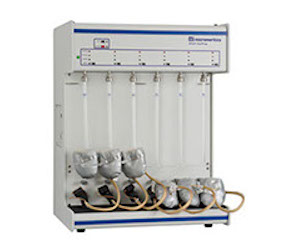
SmartPrep™ 065
The SmartPrep™ 065 is a flowing-gas degassing unit which removes adsorbed contaminants from the surface and pores of a sample in preparation for analysis. It contains six sample ports, each one independently temperature-controlled for greater flexibility. It contains two serial ports, one for connecting to the computer and the other available for connection of an additional SmartPrep. The temperature, ramp rates, and soak times of each sample are individually controlled by the computer. Up to five ramps and soaks are allowed. All degas information is integrated into the sample data file for future reference.
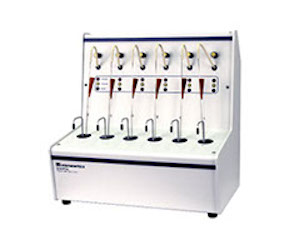
Options
Cirrus 2 Mass Spectrometry
Cirrus 2 offers the versatility of state-of the-art Microvision 2 quadrupole mass spectrometry in a convenient bench-top configuration.
- Monitors multiple gas species over a wide dynamic range of compositions at atmospheric pressure.
- Direct Ethernet interface – fully network compatible.
- Recipe driven Process Eye™ Professional software for automated operation and calibration.
- Silica capillary inlet heated to 150° C.
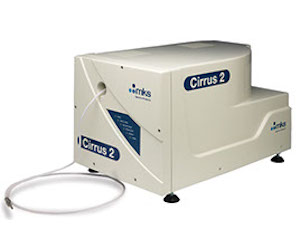
Cryostat I
A closed-cycle cryocooler based on the Gifford-McMahon (GM) refrigeration principle.
- Probe the ultra-micro porosity of a MOF with an Argon (87K) gas probe.
- Improve determination of the isosteric heat of adsorption through closely spaced temperature measurements and control.
- Eliminates the need for liquid nitrogen and can cool and obtain temperatures below the 77K of liquid nitrogen.
- Precise positioning to maintain accurate control temperature of sample tubes.
LN2 Transfer System
The Model 021 LN2 Transfer System allows you to transfer liquid nitrogen or liquid argon from a nonpressurized storage Dewar into smaller containers as needed in laboratory experiments. The system was specifically developed for conveniently filling Dewars for gas adsorption instruments but also can be used for other cryogen applications. The Model 021 can discharge cryogens at adjustable rates up to 3 liters/min. The roller base makes it easy to move the 021 System to the location where the cryogen is needed. The nozzle and insulated, flexible hose enable convenient filling and refilling of analysis Dewars. The system can hold liquid nitrogen or argon up to 30 days allowing cost-efficient use of your cryogen.
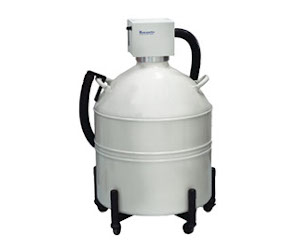
Iso Controller
Sub-Ambient, Thermoelectric Cooled Dewar
Micromeritics’ ISO Controller utilizes thermoelectric cooling based on the Peltier principle. The unit is designed to maintain a constant temperature between 0 °C and 80 °C when using CO2, N2, and other gases for adsorption analysis. The device rapidly cools and efficiently maintains temperature with minimal electrical current required. The sample area will accommodate up to 3 sample tubes. Heat removal is uniform and accurate when the unit is used with an appropriate liquid (ambient water or liquid antifreeze). The dewar section is placed on the instrument dewar elevator and then raised into position for analysis.
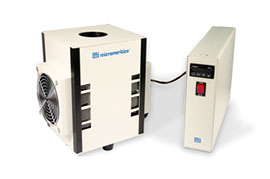
Activated Carbon
High Resolution, High-throughput Surface Characterization Analyzer
3Flex has become a crucial tool for providing accurate data to advance the fundamental understanding and theory of the porous, structural character influence in activated carbon performance.
Evaluate the efficiency and effects of chemical or physical activation and impurity content influence
Break through barriers to turn theory into actual product design. Gain greater understanding of the physiochemical character of your activated carbon after modification and the influence of impurities on performance. Users can conveniently model the textural properties of their materials with MicroActive Software and 3Flex data.Enhanced data exchange with your team transforms experimental results into actionable product understanding and improvement.
Precise analytical tool for total surface area, extent of micro porosity and pore size distribution determinations
3Flex permits you to optimize your ideal, experimental parameters to acquire data important to the understanding of the textural characterization of activated carbon adsorbents and catalyst.Hard seal valves and connections of the 3Flex, permit fast attainment of low pressure, ultra-micropore resolution.
Optimize your production methods to build process-strong activated carbon adsorbents
With 3Flex you obtain valuable data to provide insight on how to optimize and predict your activation process efficiency. Utilize the high throughput results ability of the 3-port mesopore and micropore analysis of the 3Flex, to gain rapid understanding of restrictions or boundaries that may influence or impede your process optimization.
Scientific Parameters
Determine adsorption dynamics in regard to resident time for performance in fixed bed and flow through systems
Acquire valuable data for greater understanding of the influence of surface area and porosity on performance
Gain valuable insight of structural and chemical heterogeneity influence on adsorption dynamics
Superior gas management, all metal seals and valve seats along with precise temperature control permit accurate and precise micropore measurements.
Evaluate temperature and chemical deactivation processes in regard to porosity and surface activity
3Flex provides the ability to analyze three samples with three different gas probes, one on each port, simultaneously to determine mesopore and micropore porosity as well as adsorption character.
MOF's & MOP's
High Resolution, High-throughput Surface Characterization Analyzer
3Flex has become a crucial tool for extending the range of reliable data to advance the understanding of the porous textural character of organic framework candidates. 3Flex enables you to study the selectivity and the efficiency of uptake and release of gas or a condensed phase within an organic framework, as a function of its structural properties, metal nodes and organic compounds.
Increase analytical knowledge for fine-tuning pore dimensions for gravimetric and volumetric capacity
Gain greater understanding of the characteristics, uptake and regeneration of MOFs and POPs. Users can conveniently model the textural properties of their materials with MicroActive Software and 3Flex data. Enhance data exchange with your team and transform data into actionable material understanding and improvement.
Gain valuable insight for probing adsorption site binding mechanisms
Compare saturation capacities and specificity to increase your understanding of structure and functionalization. Investigate the influence of pore structure, pore size and substrate/analyte interactions. 3Flex is the only available surface characterization system with the ability to analyze a sample with three separate probe gases simultaneously, one on each port, and within a single run.
Extend and Increase your knowledge for design and synthesis of specified pore size, functionalized MOFs
3Flex permits you to optimize your ideal, experimental parameters to gain improved understanding of the void space, cage structure and channels of your metal or polymer organic frameworks. Class leading architecture, hard seal valves and connections coupled with the precise temperature control of the 3Flex, permits accurate data collection of adsorption/desorption isotherms at low pressure (10-9) for insight into binding affinities at low loading.
Optimize your production methods to build process-strong organic framework adsorbents and catalysts
With 3Flex you gain valuable data to utilize in the the design, synthesis and to evaluate the stability of metal organic frameworks and porous organic polymers. Utilize the high throughput results ability of the 3-port mesopore and micropore analysis capabilities of the 3Flex to gain rapid understanding of restrictions or boundaries that may influence or impede your process optimization.
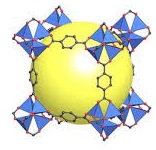
Scientific Parameters:
Determine the influencing relationship of surface area, pore volume and substrate/analyte interactions for uptake, capacity, and release evaluations
3Flex is the only instrument capable of utilizing three gas probes of different types to be used simultaneously in a analysis run, one probe gas on each of the three independent analysis ports.
Confirm BBR (build block replacement) functional changes and their effects on performance
MicroActive™ Data Software permits you to include or exclude data, graphically isolating the desired range of experimentally acquired Isotherm data points using interactive, movable calculation bars. MicroActive enables you to export or report your findings in mmol/g.
Investigate the influence of Hydrogen adsorption enthalpy
3Flex has the ability to expediently switch from Physisorption to Chemisorption permitting investigation for enthalpy tied to ligand influence.
Evaluate optimal small pore size as a strategy to enhance hydrogen-framework interactions
Superior gas management and temperature control permits accurate and precise micropore and ultra-micropore (< .7nm) measurements.
Hydrogen storage potential of MOFs at high pressure
Zeolites
High Resolution, High-throughput Surface Characterization Analyzer
3Flex has become a crucial tool for producing reliable data to increase the fundamental understanding and theory of microporous and mesoporous structural character in zeolite design and process optimization.
Gain valuable performance information of adsorption/desorption behavior
Compare saturation capacities by utilizing water vapor, argon, nitrogen, or a probe of your choice, enabling you to understand structure and its influence to the chemical nature and heterogeneity of the pore walls. 3Flex is the only, available surface characterization system with the ability to analyze a sample with three separate adsorbent gases simultaneously, one on each analysis port, and within a single analysis.
Extend and increase your knowledge in determining optimal kinetics of adsorption through porosity, pore volume, shape and mechanical stability
3Flex permits you to optimize your ideal experimental parameters to acquire data for better understanding of the textural characterization of hydrophilic and hydrophobic zeolite catalysts and absorbents. The advanced engineered design of the 3Flex permits you to acquire accurate data with resolution to 10-5mm/Hg.
Turn your ideas into optimized design for volumetric efficiency and active site accessibility
Gain greater understanding of the characteristics and the diffusion character of the porous structure of your sample. Users can conveniently model the textural properties of their materials with MicroActive Software and 3Flex data. Enhanced data exchange with your team transforms experimental results into actionable product understanding and improvement.
Optimize your production methods to build process-strong zeolite absorbents and catalyst
With 3Flex you gain valuable data to be utilized in the design and synthesis of zeolites. Utilize the high throughput results ability of the configurable three-port analysis capabilities of the 3Flex, to gain rapid understanding of restrictions or boundaries that may influence or impede your process optimization.
Scientific Parameters:
Determine if Zeolite processing has resulted in loss of structure or degradation
The advanced architecture of the 3Flex provides industry leading micropore resolution and may provide more accurate information than X-Ray diffraction to resolve minor structural defects due to processing.
Obtain valuable insight for pore architecture to gain greater understanding of transport, diffusion rates and selectivity
3Flex is the only instrument capable of using three separate gas probes, one at each port, in a single run.
Quantitatively determine the number of surface active sites for catalytic potential. Provide data related to monolayer uptake, metal area, dispersion and active metal area of heterogeneous catalysts
The advanced flexibility of the 3Flex lets you quickly change from Physisorption analysis to Chemisorption analysis in minutes to permit full characterization in one instrument.

